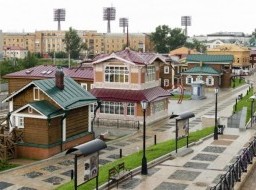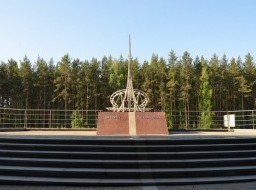Drum Tower
The Drum Tower was built in1272 during the reign of Kublai Khan, when it stood at eh very heart of the Yuan capital Dadu. At that time it was known as the Tower of Orderly Administration (Qizhenglou). In 1420, under the Ming Emperor Yongle, the building was reconstructed to the east of the original site and in 1800 under the Qing Emperor Jiaqing, large-scale renovations were carried out. In 1924, the name of the building was changed to the Tower of Realizing Shamefulness (Mingchilou) and objects related to the Eight-Power Allied Forces' invasion of Beijing and later the May 30th Massacre of 1925 were put on display. Nowadays, the upper story of the building serves as the People's Cultural Hall of the East City District. The first level of the Drum Tower is a solid square terrace four meters high, 55.6 meters long and 30 meters wide. The front and rear of the terrace are pierced with three arched openings and the two sides with one opening each. The broad, squat multi-eaved wooden structure built atop the terrace is impressive with its red wall and yellow glazed roof. In ancient days, the Drum Tower was the time keeping center for the whole city and was equipped with bronze clepsydras (water clocks) and drums that were beaten to mark the hours. The four bronze clepsydras, which once functioned in the Drum Tower, were reputed to date from the Song Dynasty. Set between these four devices was a large bronze gong, which through a series of mechanical devices was linked to the water clocks and sounded each quarter of an hour. When the system of telling time with incense coils, which burned for hours were introduced, the clepsydras fell into disuse. In ancient times the upper story of the building housed 24 drums, of which only one survives. Its head is made of an entire ox hide and is 1.5 meters in diameter. A sword score on the side of the drum is a souvenir of the Eight-Power Allied Forces' invasion of Beijing in 1900. In the Qing Dynasty, the hours were marked at night beginning at 7:00 p.m., a procedure that was popularly called "setting the watch." At this hour, the drums were sounded 13 times. After the watch had been "set" in this fashion, each subsequent two-hour interval was marked by a single drum beat. Civil and military officials oriented their lives around these time signals. At the sounding of the third watch (1:00 a.m.) officials attending the morning court audience rose from their beds and at the fourth (3:00 a.m.) assembled outside the Meridian Gate (Wumen). At the sounding of the fifth watch (5:00 a.m.) they entered the Imperia lPalace and knelt on the Sea of Flagstones (Haimen) before the Hall of Supreme Harmony (Taihedian) to await instructions from the emperor. At Drum Towerdrum towerDrumming PerformanceThe Drum Tower was equipped with bronze clepsydras and drums that were beaten to mark the hours. The drum was beaten quickly for 18 times and then slowly for 18 times to mark the hour. You have the opportunity to climb to the top of Drum tower for an excellent view of drumming performance which lasts for 20 minutes. |













